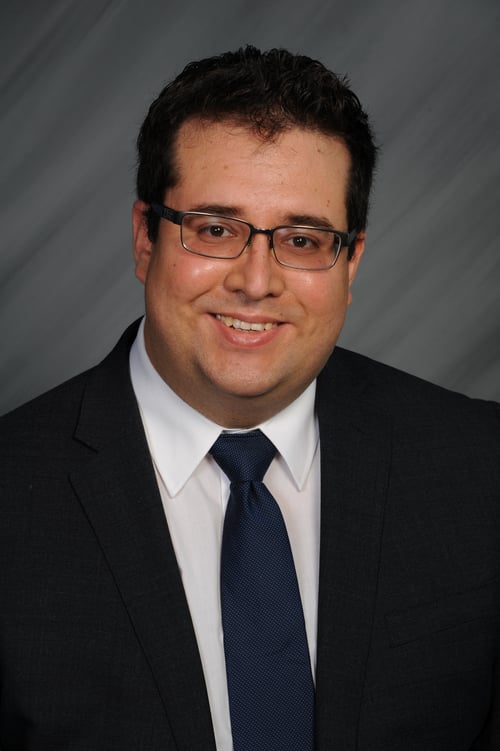.jpg?width=900&name=Johnson%202%20(1).jpg)
When most people hear the word “arthritis,” they likely picture an aging individual with “creaky old” joints, worn-out from a lifetime of use. Although it certainly is true that with the increased longevity of life seen with modern medicine, aging-associated osteoarthritis has become incredibly prevalent and common. What many people fail to realize is that arthritis is not just a disease of the elderly; it can happen to kids and adolescents as well. When it does, it is termed “juvenile arthritis,” and it so happens that the month of July is specifically dedicated to spreading awareness of this important topic.
Juvenile arthritis comes in many forms, and in fact, the phrase “juvenile arthritis” itself is really an umbrella term used to encompass the many different inflammatory and/or autoimmune/rheumatic disorders that can result in pediatric joint disease. The child’s joint can be warm, painful, covered in rashes, difficult to fully flex or extend, etc., making everyday life very frustrating and painful for these children and adolescents. Although there are an estimated 300,000 children in the US living with these conditions, thanks to modern medicine many of the juvenile arthritis cases affecting children can be managed relatively well. With that in mind, it is important to understand what type of juvenile arthritis the child has, as the treatment and lifestyle changes necessary for managing the symptoms will vary between each condition, as well as the prognosis.
“Juvenile Arthritis” Most Common Forms:
- Juvenile idiopathic arthritis (JIA) – involves symmetric joint pain and stiffness that is worse in the morning and improves throughout the day. Big picture treatment involves NSAIDs (e.g. naproxen) and corticosteroids, followed by methotrexate or TNF-alpha inhibitors if unsuccessful. JIA has various subtypes, including
- Systemic JIA: This is distinguished by fever and rash; similar rates are seen in boys and girls. Age of onset usually before 16 years of age. Joints may not show any long-term effects, but severe joint destruction requiring joint replacement may be seen.
- Oligoarticular JIA: Less than 5 joints are affected, and the age of onset is 2-3 years. Occasionally severe joint destruction is seen, but more than 50% of the time patients will not have relapses and their symptoms will resolve within 6 months.
- Polyarticular JIA: This is more common in girls, and more than 5 joints are affected. Age of onset is 2-5 years old and 10-14 years old.
- Juvenile lupus – can present very similarly to JIA with very similar treatment, but lupus in adolescents is more likely to have psychiatric symptoms in addition to joint symptoms.
- Juvenile scleroderma – Systemic sclerosis is more common in adults but can be seen in children. There is no cure so treatment is largely supportive.
- Juvenile dermatomyositis – Dermatomyositis is more common in children, whereas polymyositis is more common in adults. Weakness in the lower limbs and characteristic skin findings can be seen. Updated screenings will be necessary for your child as they are potentially at increased risk of certain cancers.
- Mixed Connective Tissue disease – This may present as a combination of lupus, systemic scleroderma, and polymyositis. More common in girls. Management depends on treating symptoms based on the other juvenile arthritis disorders it resembles (e.g. lupus, scleroderma, polymyositis).
- Fibromyalgia – This is more common in girls, but hardly ever presents earlier than puberty. Fibromyalgia may present as aching joint pain, fatigue, and disrupted sleep. A scheduled regular exercise program and good sleep hygiene (i.e. going to bed on time, no television in the bedroom, low lighting) are first-line interventions for improving symptoms.
- Kawasaki disease – This rare but serious disease affects blood vessels (vasculitis) and joints, and it is usually seen in children less than 5 years old. It requires the use of aspirin and IV immunoglobulin (IVIG) in a child, along with echocardiogram follow up to ensure child does not develop coronary artery aneurysms or other long-term heart problems. Children should refrain from being vaccinated with any live vaccines for 11 months after receiving IVIG.
As seen above, it is imperative to first have the correct diagnosis, in order to get the appropriate treatment necessary to help the child live their life to the fullest. Huge advancements have been made in the management of these disorders, and the month of July is a wonderful time to remember the children and teenagers who are afflicted with these conditions, and join in appreciating the research and foundations that have sacrificed their time and resources to further improve the quality of life for these children. Play with your children, and do not take their youthful vigor and zeal for physical activity for granted. Organizations like KidsGetArthritisToo (www.kgat.org) and The Arthritis Foundation are great places to start if one ever wishes to get involved in helping families that need encouragement as they face the challenges of these diseases.
.jpg?width=92&name=Johnson%202%20(1).jpg) Dr. Johnson is a resident physician who sees patients of all ages and provides obstetrical services at Lone Star Family Health Center, a non-profit 501©3 Federally Qualified Health Center operating facilities in Conroe, Spring, Willis, Grangerland, and Huntsville, and serving as home to a fully integrated Family Medicine Residency Program to increase the number of Family Medicine physicians for Texas and our community
Dr. Johnson is a resident physician who sees patients of all ages and provides obstetrical services at Lone Star Family Health Center, a non-profit 501©3 Federally Qualified Health Center operating facilities in Conroe, Spring, Willis, Grangerland, and Huntsville, and serving as home to a fully integrated Family Medicine Residency Program to increase the number of Family Medicine physicians for Texas and our community



